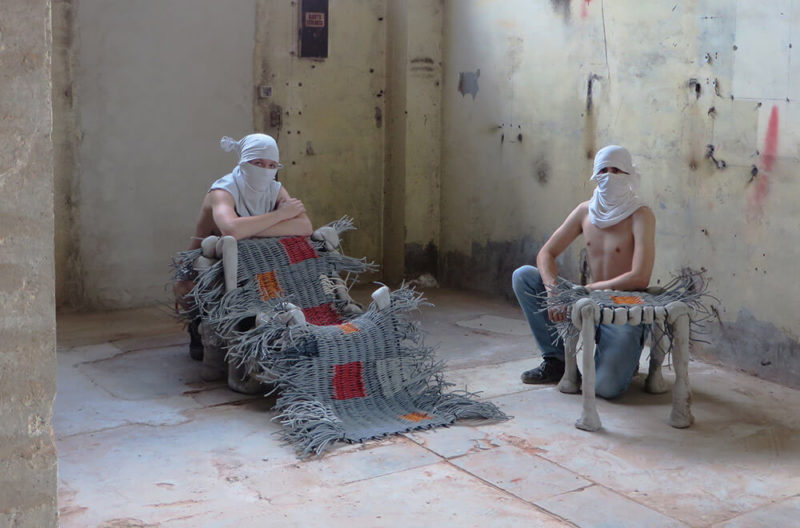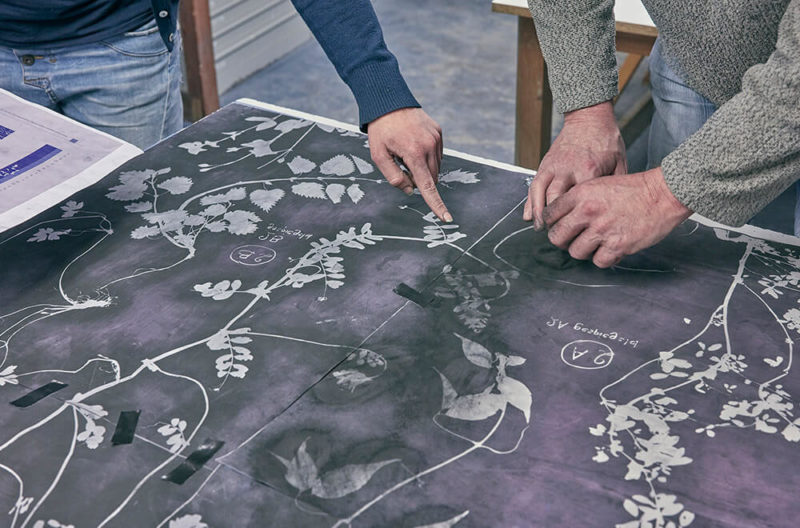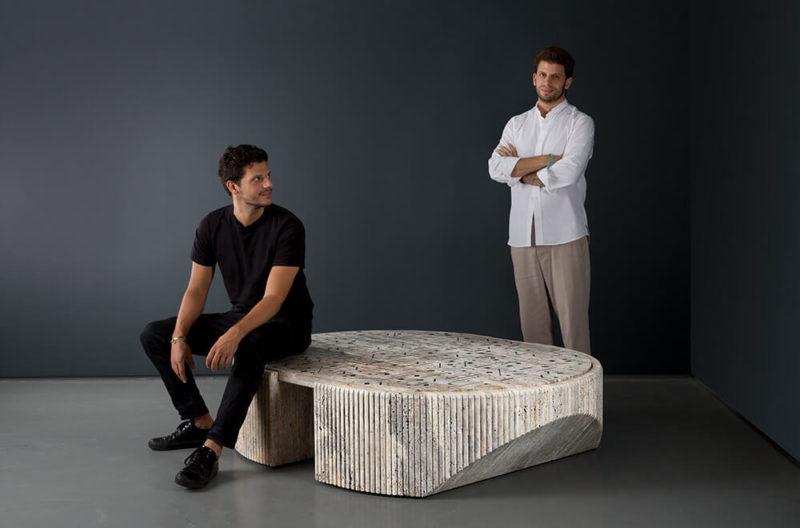Johnny Swing
The celebrated maverick’s first solo show at New York’s R & Company offers a new range of sublime sculptural furniture.
R & Company, 64 White Street, New York
8th September – 31st October 2020
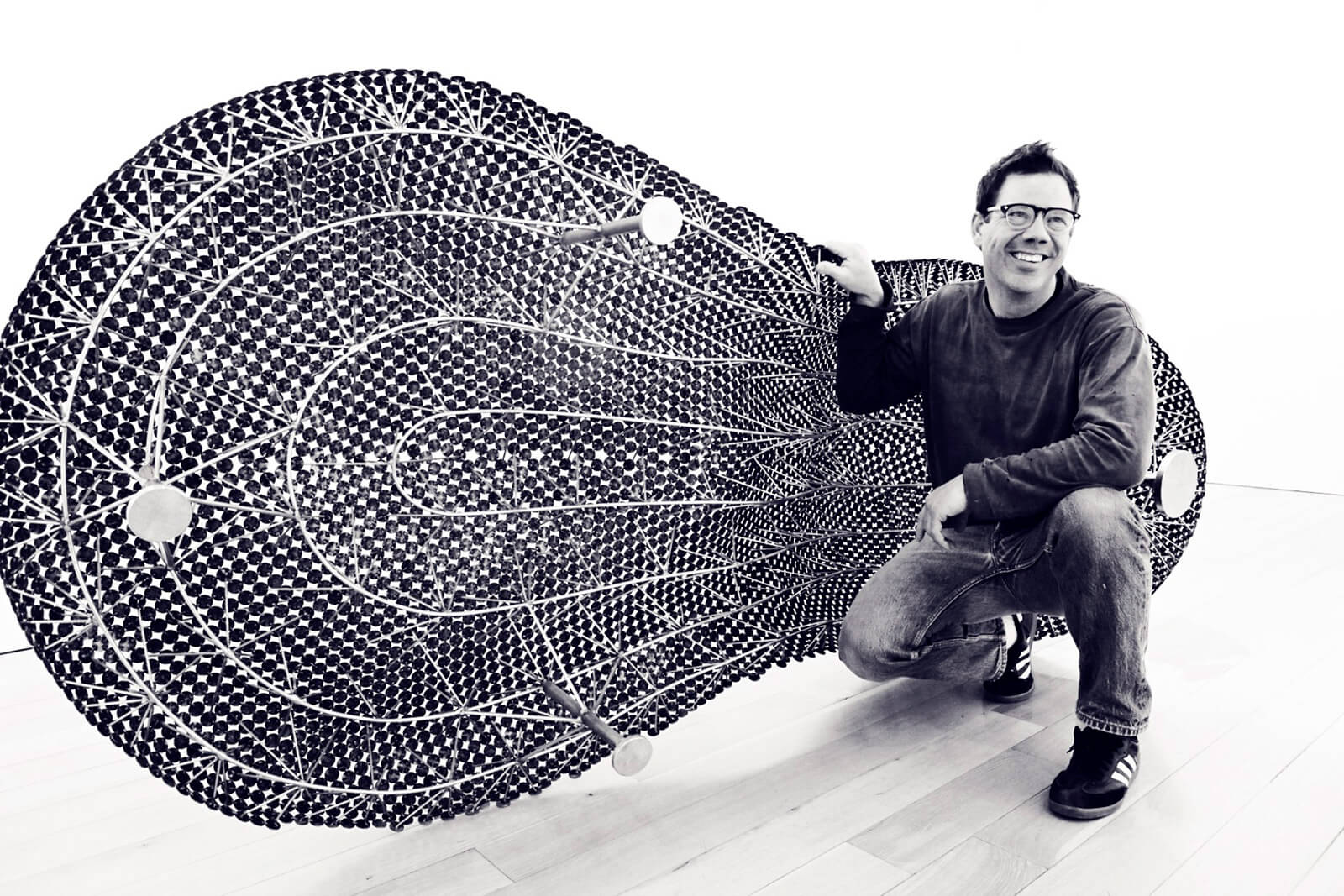
Johnny Swing revealing the substructure of ‘Quarter Lounge’, 2008
COURTESY: R & Company / PHOTOGRAPH: © Kimberly M. Wang / Ear Dog Productions
ONE ENCOUNTERS A Johnny Swing settee on three levels. While its grand amoebic form works to catch the viewers’ attention, the intricate pattern of its free-flowing surface draws them in, only to reveal the faint relief of the decommissioned coins it incorporates. Whether emulating bird murmurations – or the unexpectedly dramatic undulations of ubiquitous fortune cookies – each monumental work results from a bespoke, labour-intensive welding process the Vermont-based talent has perfected over the past three decades. One-off furnishings created using thousands of nickels, quarters, and half-dollars play with the notion of monetary value, riffing on the true worth of fiat currency and the often-overlooked time involved in highly-skilled craftsmanship.
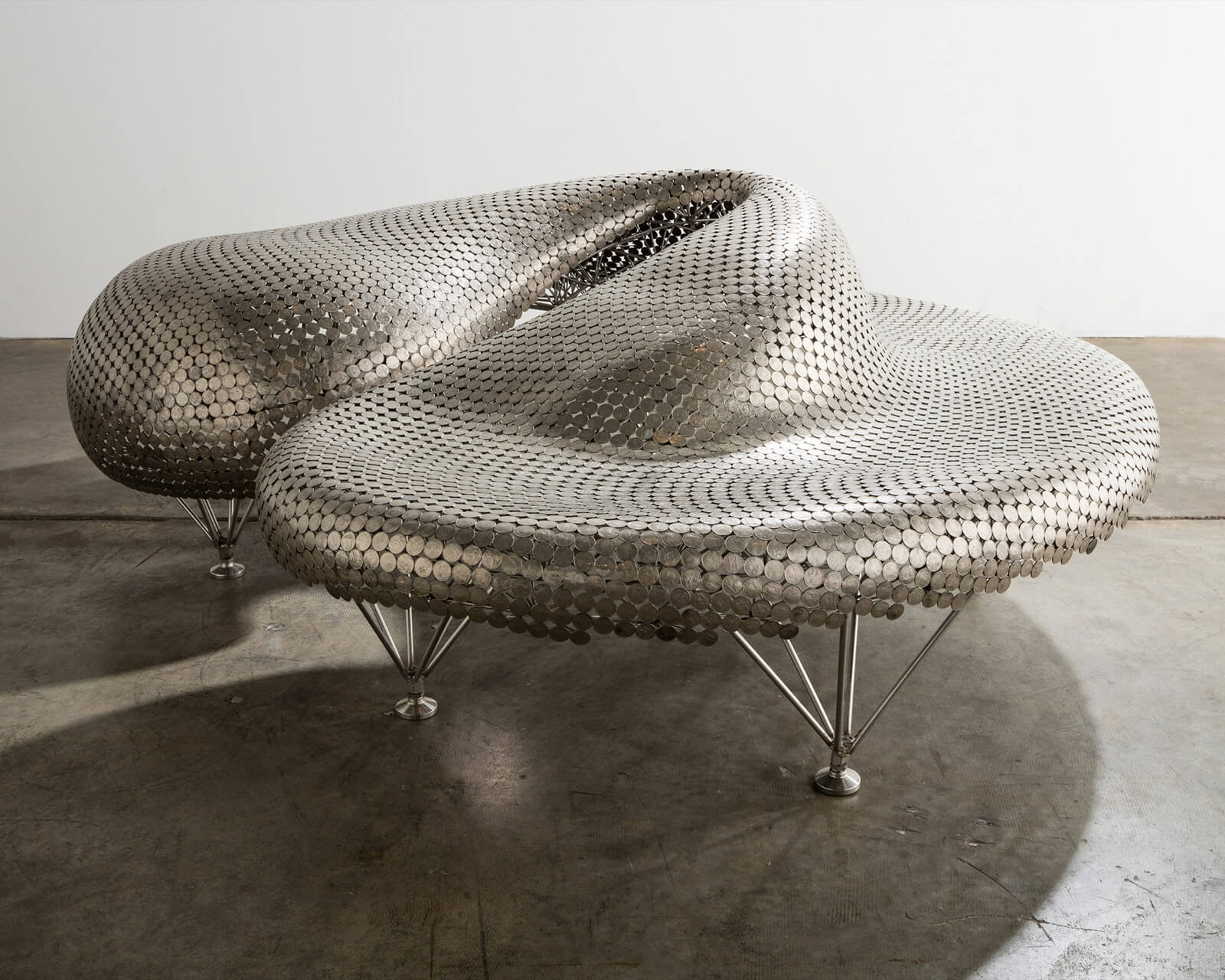
Johnny Swing, ‘Fortune Cookie’, 2014
COURTESY: R & Company
Although his sculptural pieces feature in prominent collections – from Jack Lenor Larsen’s LongHouse Reserve in East Hampton, to Chatsworth House in Derbyshire, UK – the revered, yet unfeigned, talent doesn’t take on any airs about his success. Swing is merely interested in creating functional works that adhere to a particular type of social responsibility: the capacity to delight and spark curiosity. These are attributes that the noted proponent of American Studio Furniture exudes in his own inventive and resourceful approach. With the new ‘Septem Maria’ (Seven Seas) collection set to debut at New York’s R & Company early next month, Swing is pushing the envelope even further and quite literally pinching his pennies. Inspired by how egg whites froth when whipped, the new pieces will interlock together as a type of iridescent landscape, a centrepiece installation viewable from multiple angles of the gallery’s three-story atrium.
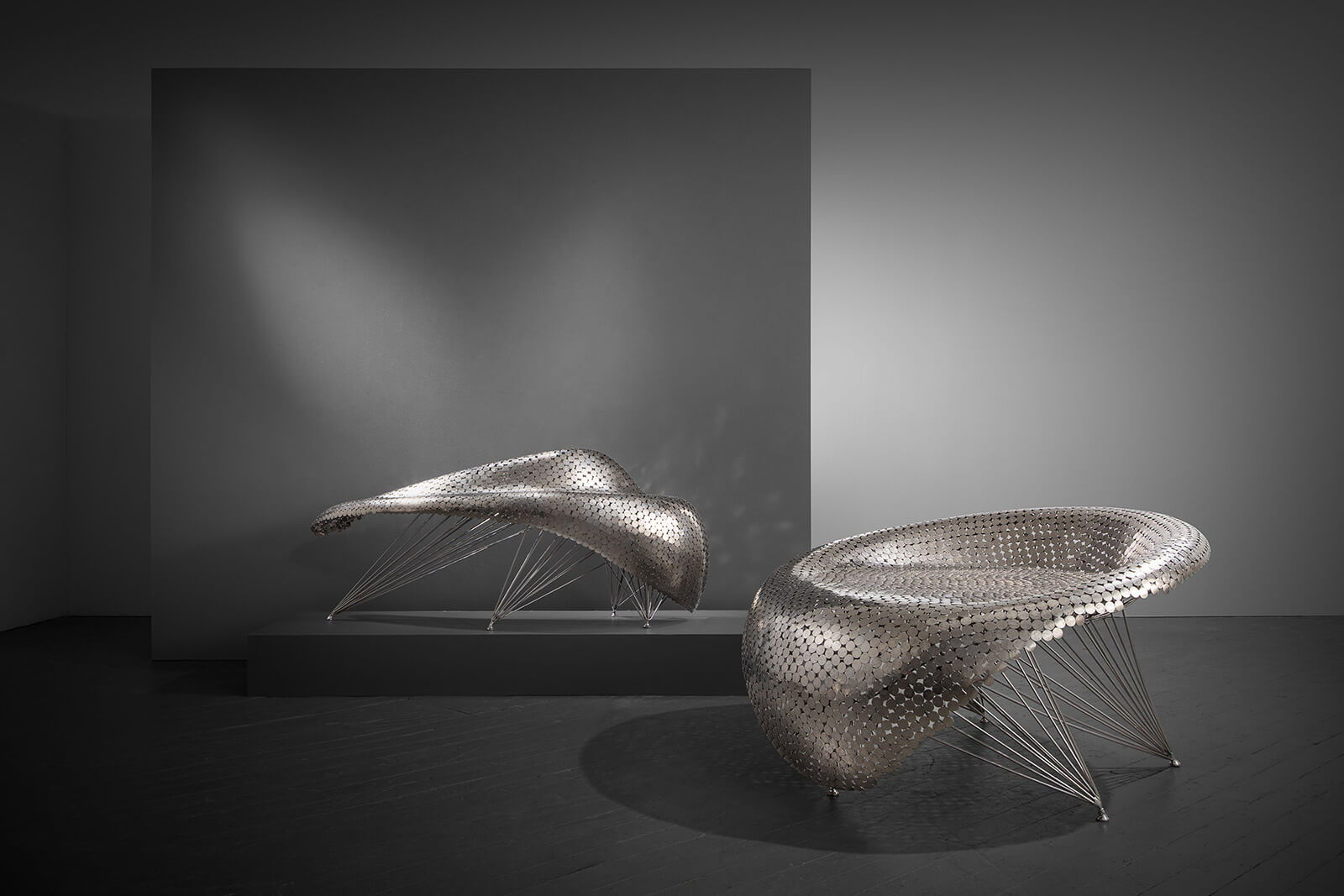
Johnny Swing, ‘Setem Maria” (Seven Seas) collection, 2020
COURTESY: R & Company / PHOTOGRAPH: Joe Kramm
“From an early age, I learned that metal is pretty much liquid and malleable. It’s this godlike thing where you can weld any two elements together to create a whole. It’s not glue or a joint,” Swing describes his early affinity for metal. “I have a bit of Yankee ingenuity. I’m from New England. Everybody just fixes things here.” The Connecticut-native began his career as a fixture of the late 20th-century Lower East Side Manhattan creative scene. Working primarily with salvaged industrial parts, the certified welder and blacksmith made a name for himself by creating bold – and at times eccentric – sculptures and furnishings that combined disparate elements like glass jars and wooden planks.
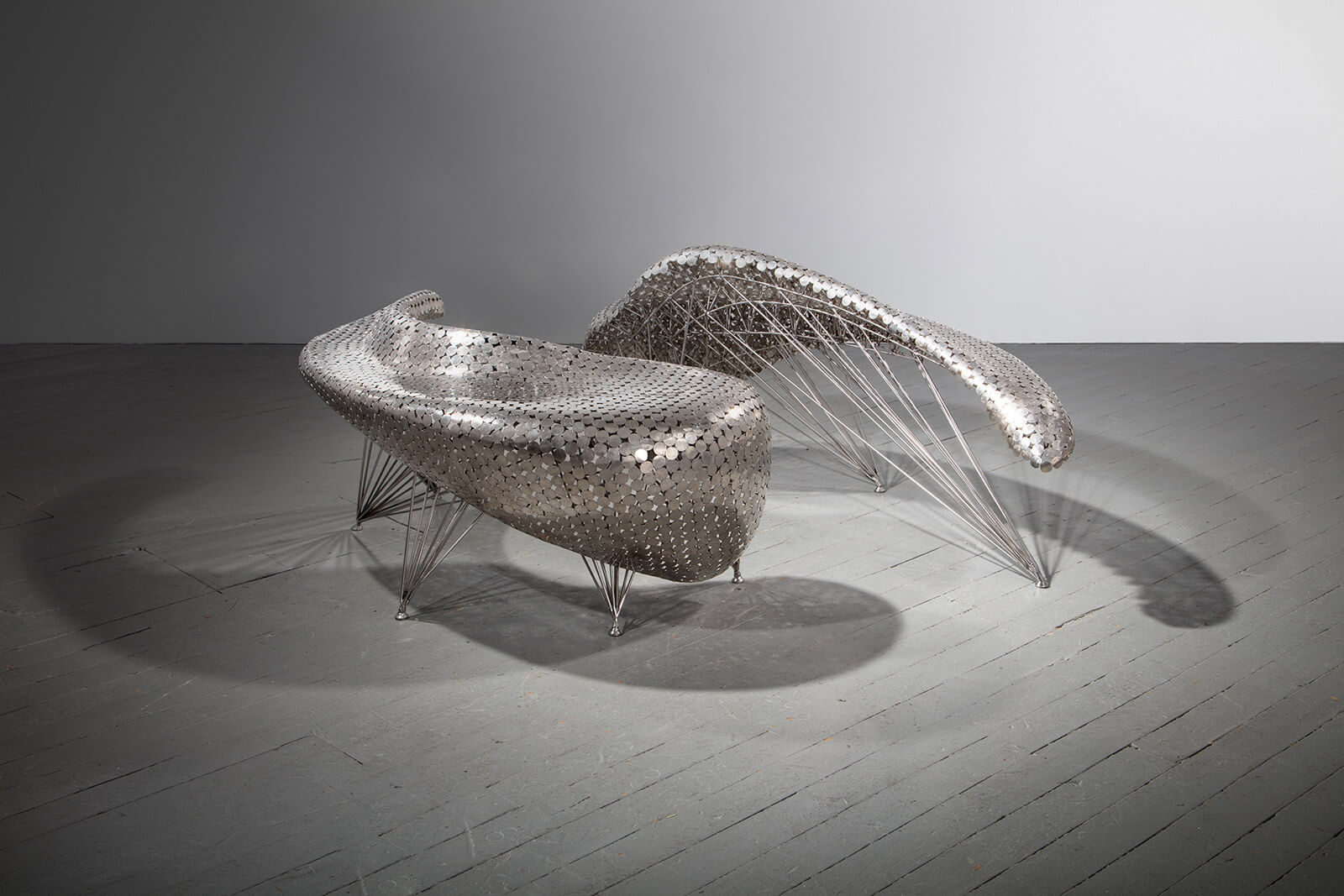
Johnny Swing, ‘Setem Maria” (Seven Seas) collection, 2020
COURTESY: R & Company / PHOTOGRAPH: Joe Kramm
Moving shop to a sprawling farm in Vermont in the mid-90s, the artist began experimenting with coins, an approach that stemmed from his desire to create objects that could be more homogeneous and expressive. “Connecting found objects can only go so far in becoming something else,” Swing explains. “By squishing, sanding, and deforming coins, I’m able to have more control and create works that fuse together and stand on their own.”
SWING BEGINS EACH new coin furniture piece by carving out the desired shape in a large styrofoam block, at times inspired by specific formal references and other times not. The mould of sorts then serves as a base for creating a welded coin surface that will eventually appear to float in thin air. The master craftsman has refined a unique technique in which the substructure that holds the piece together is essentially rendered invisible. Though the procedure of slowly but surely constructing these glimmering, textural skins is relatively random, meditative, and slightly obsessive, Swing and his assistants carefully consider each of the thousands of coins they might end up using on a given work. Over time, a pattern takes shape and overrides the visual impact of each individual coin. Yet, these elements still carry their own weight. “If you go as tight as your eyes will let you, the sculptural definition of each coin can still be detected down to the thousands of an inch,” the artist adds. “Bending the coins removes some of the definition and creates a ghost-like effect.”
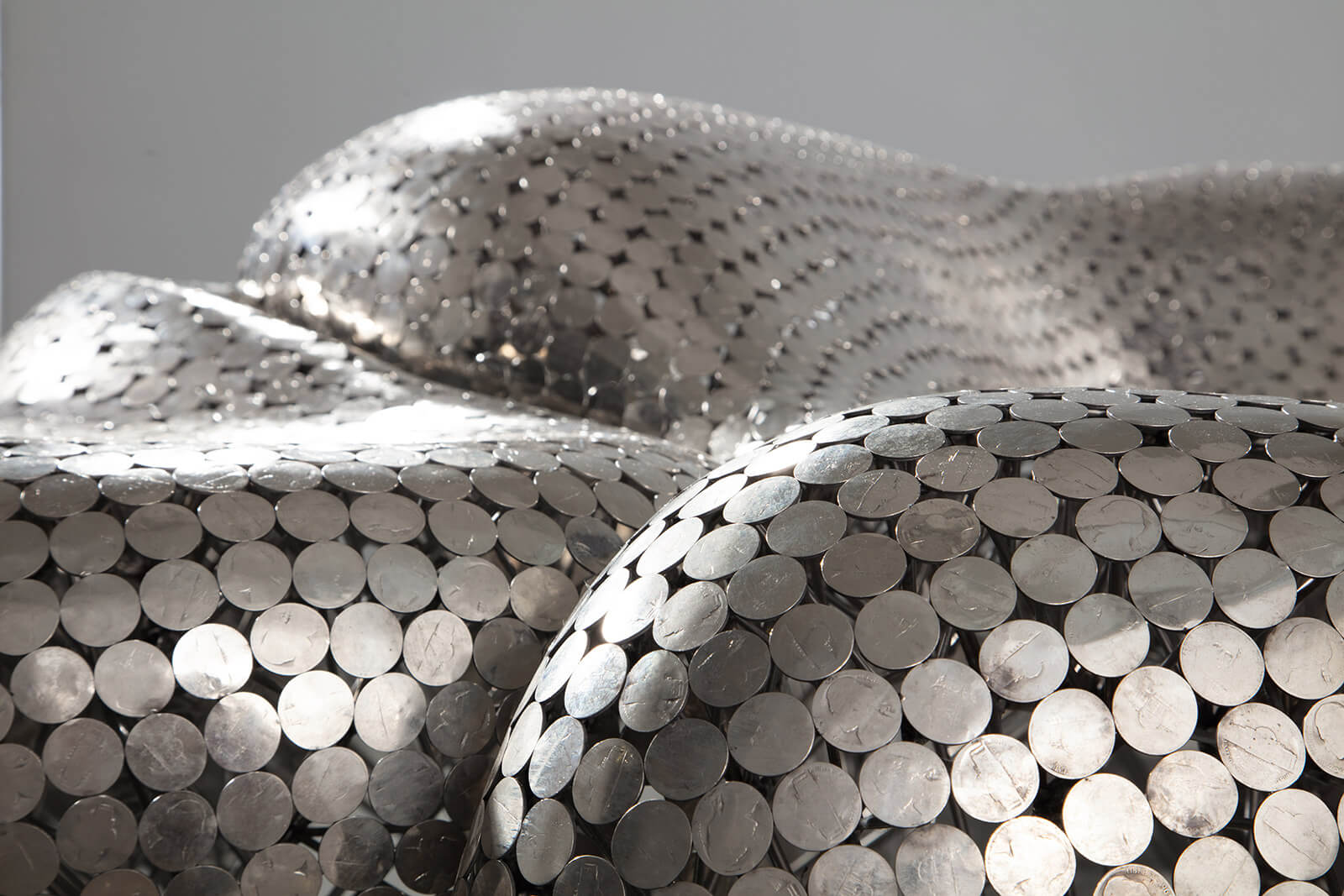
Johnny Swing, ‘Setem Maria” (Seven Seas) collection, 2020 (detail)
COURTESY: R & Company / PHOTOGRAPH: Joe Kramm
The new ‘Septem Maria’ collection champions an approach in which the coins are even more transfigured. Working with rare dollar coins has allowed Swing to take more ownership over the appearance of his designs. These new pieces are even more abstracted and transcendent than earlier works. “They’re not necessarily found objects anymore,” he explains. “They’re found and then altered. A painter buys paint from Winsor & Newton, he or she might squirt it out of the tube and use it as it is, or mix it in with other materials. Both approaches can equally be considered art. For this new collection, I’ve just put a bit more of my hand in it.” The modular yet biomorphic series will include chair, sofa, and table typologies.
Whether it be a question of the type of coin he’s using or the scale of the object itself, size matters to Swing. His smaller bowls are harder to create as they require fewer elements and don’t blend as well as they do in his larger works. The actual material compounds and alloys of the coins are also a crucial factor. “Pennies are the hardest to weld because they’re so thin. Copper is one of the best heat dissipators, and so is not as easy to manipulate,” he describes. “Nickels are made out of pure nickel and are easier to bond.”

Johnny Swing, ‘Murmuration’, 2012 (view of stainless steel armature)
COURTESY: R & Company
It’s hard to avoid that Swing’s implementation of actual money to create expensive works of collectible design isn’t infused with a level of satire and humour, even if the coins he employs are decommissioned and acquired from banks at a much lower cost. “Early on, people actually thought I was destroying or wasting money,” He recalls. “I’m still asked if my furniture pieces are worth more than the sum of their parts. People are often surprised that they’re sitting on what was once $7,000 worth of coins – normally a down payment on a fancy car, or cheap house. It’s significant, and forces them to re-evaluate the concept of money.” Swing has also worked with paper dollar bills to create cushions and even recently tailored his own face mask using this incredibly charged material. “It’s like breathing in money,” he jokingly proclaims.

Johnny Swing, ‘Dollar Bill Flag Pillow’, 2017
COURTESY: R & Company
“Though my pieces are gestural, resulting in swoopy and sexy sculptures, they also have to be comfortable,” the artist reveals. “Creating furniture is magical because you’re surrounding people with your work. It doesn’t matter if you call it art, craft, or design, as long as different people can enjoy it. It’s a home run if someone can have a transformative experience when interacting with one of my benches or chairs. I go with the thought that we’re all a bit like raccoons and are drawn to shiny things. Of course, I need to please myself before I can convince others.” Johnny’s ultimate aim is to establish a dialogue with his viewers. The new ‘Septem Maria’ collection will certainly do its part, if only from a distance.
Johnny Swing – sculpture.
Fast and Present: New Work by Johnny Swing at R & Company.




